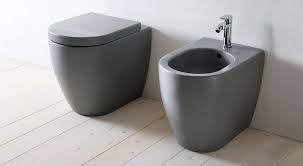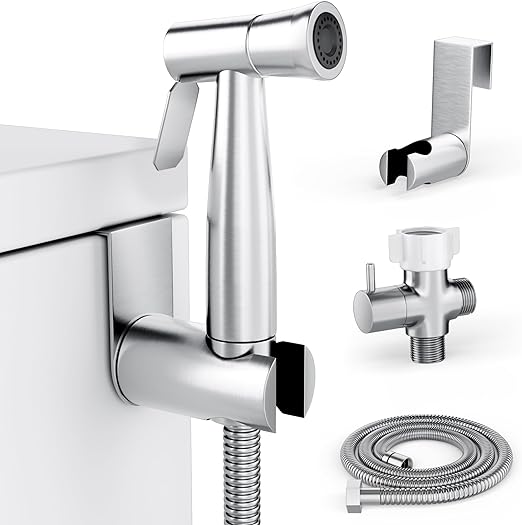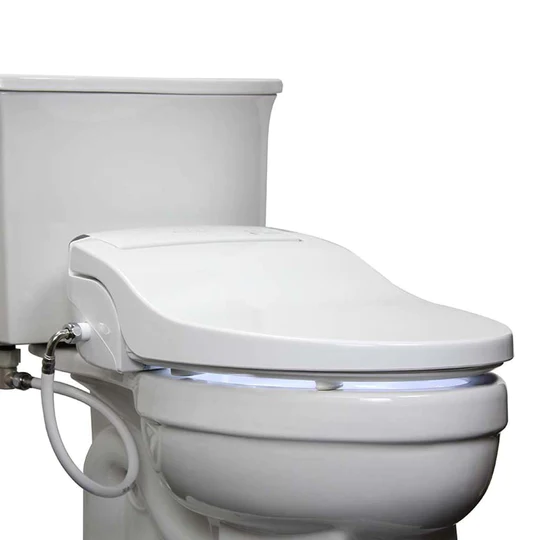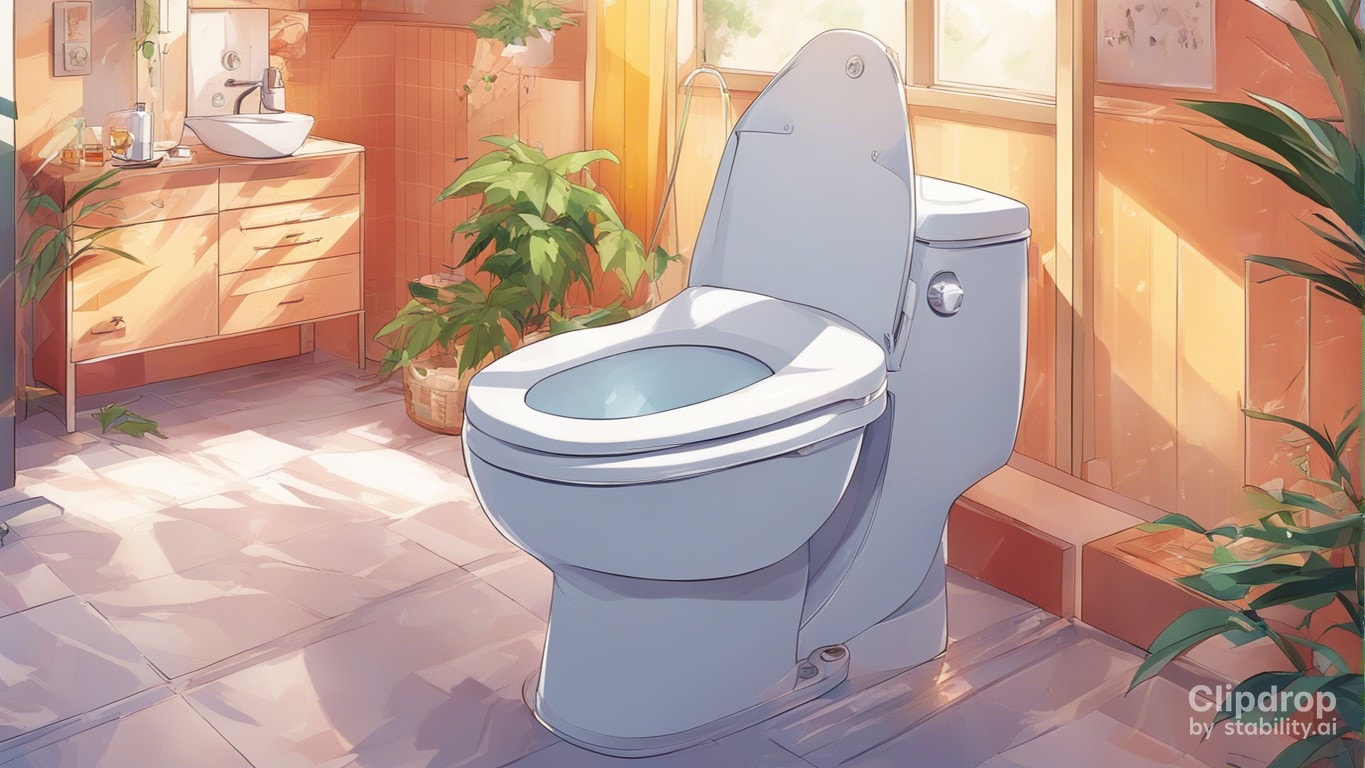Are you unsure about the proper use of a bidet?
Wondering if it’s acceptable to pee in a bidet?
You’re not alone.
Many people are curious about this bathroom conundrum but hesitate to ask.
Let’s dive into the world of bidets and explore their unique purpose.
In this article, we will address your burning question and provide clarity on whether or not you can use a bidet for urination.
Get ready to uncover the truth about bidets and their functionality.
Say goodbye to any lingering doubts and embrace a new level of bathroom hygiene!
Table of Contents
Understanding Bidets
Bidets have been a staple in many bathrooms around the world, offering a unique and hygienic way to cleanse oneself after using the toilet.
But what exactly is a bidet, and how has it evolved over the years?
What is a Bidet?
A bidet is a plumbing fixture designed for washing the genital and anal areas.
Traditionally, a bidet is a low oval basin, separate from the toilet.
However, with the evolution of bathroom fixtures, the term “”bidet”” now encompasses a range of devices, from bidet attachments to high-tech toilet seats with built-in bidet functions.
Evolution of Bidets
The traditional bidet, often referred to as a stand-alone bidet, has been around for centuries.
It’s commonly found in hotels and restaurants, especially in Europe and parts of Asia.
This type of bidet is designed to handle urine effectively, thanks to its structure and water flow.
However, it’s essential to use it correctly, avoiding actions like standing to pee or tossing toilet paper into it.
Over time, the bidet has seen numerous advancements, adapting to modern needs and preferences.
Companies have reimagined the older bidet designs, introducing high-tech versions with added features for comfort and ease of use.
Types of Bidets
Bidets have become a popular bathroom fixture, especially in European countries, Asia, and South America.
Their primary function is to clean the genital and anal areas after using the toilet.
However, with the variety of bidets available in the market, it’s essential to understand which ones can handle urine and which ones are strictly for cleaning.
Let’s delve into the different types of bidets and their functionalities.
Stand-alone Bidet

The stand-alone bidet is a classic choice and has been around for a long time.
Commonly found in restaurants in western countries, Asia, and parts of South America, this bidet is designed to handle urine.
However, users should be cautious not to throw toilet paper into it.
For women, it’s advisable to squat slightly to avoid splashing.
If you come across a wall-mounted bidet, it’s best to avoid peeing in it as it can be uncomfortable and messy.
Bidet Hose (Sprayer/Handheld)

The bidet hose, also known as a bidet sprayer or handheld bidet, offers a different approach.
It’s easy to use, less messy, and more hygienic.
Suitable for urination, you can use it just like a regular toilet.
Afterward, the bidet hose can be used to wash off the toilet, ensuring cleanliness.
The handheld design offers more control, making it a sanitary choice.
Built-in or All-in-one Bidet
This type is essentially a standard toilet with an integrated bidet function.
Users can handle both urination and cleaning in one place.
The built-in bidet offers convenience, eliminating the need to move between a toilet and a bidet.
It provides a seamless and sanitary experience.
Bidet Attachment
A bidet attachment is installed next to the toilet.
Since it’s only an attachment and not the entire toilet, users will still use the main toilet for urination.
The bidet attachment is primarily for cleaning, ensuring no contact with urine and preventing germ spread.
Bidet Toilet Seat

The bidet toilet seat replaces the regular toilet seat and comes with a built-in bidet function.
Users can urinate as usual, but the bidet function ensures cleanliness afterward.
For men, it’s recommended to lift the bidet toilet seat before urinating and replace it once done to maintain hygiene.
In conclusion, while some bidets are designed for both urination and cleaning, not all serve this dual purpose.
When encountering a bidet, especially outside your home, it’s advisable to check its type or consult to ensure proper usage.
Proper bidet etiquette ensures hygiene and prevents any potential mess.
To Pee or Not to Pee
When it comes to bidets, the question of whether you can pee in them is a common one.
With various types of bidets available, the answer isn’t a simple yes or no.
Let’s break it down.
Bidets and Urination
Some bidets are designed to handle urine, while others aren’t.
The stand-alone bidet, for instance, is a classic type that’s been around for ages.
Often found in hotels or restaurants, this bidet can handle urine effectively.
However, it’s crucial to remember not to toss toilet paper into it.
And if you’re thinking about the wall-mounted ones, it’s best to skip peeing in them to avoid a mess.
On the other hand, the bidet hose, also known as a bidet sprayer or handheld bidet, offers a different experience.
It’s attached to the side of the toilet, allowing you to use your regular toilet for urination and then clean up with the bidet hose.
This method ensures no germ build-up and maintains hygiene.
Hygiene Concerns
While some might see peeing in a bidet as unhygienic, it’s more about using the right type of bidet.
Peeing in a stand-alone bidet or using a bidet hose after urinating in a regular toilet is generally considered hygienic.
However, always ensure that you clean the bidet after use to maintain cleanliness.
Proper Usage Guidelines
- Stand-alone Bidet: Suitable for urination. However, avoid throwing toilet paper in it. If there’s a toilet next to it, use the toilet for urination and the bidet for cleaning.
- Bidet Hose: Perfect for urination since you’re using your regular toilet and cleaning with the bidet hose afterward.
- Built-in Bidet: Acts like a standard toilet but with an integrated bidet function. You can pee or poop in it without any issues.
- Bidet Attachment: Since it’s just an attachment to the toilet seat, you’re still using your regular toilet for urination. The bidet function is primarily for cleaning.
- Bidet Toilet Seat: Replaces the regular toilet seat and comes with a built-in bidet function.
Suitable for urination, but always lift the seat before and replace it after to maintain hygiene.
In essence, understanding the type of bidet you’re using and its functions will guide you on whether it’s appropriate to pee in it or not.
Always prioritize hygiene and cleanliness, no matter the bidet type. Using the content from the provided link and the guidelines you’ve shared, I’ve crafted the section titled “”Benefits of Using Bidets”” for your article.
Here it is:
Benefits of Using Bidets

Bidets, whether traditional or modern, have been a symbol of enhanced cleanliness and hygiene in many parts of the world.
Their unique design and functionality offer numerous benefits that go beyond just washing.
Let’s delve into some of these advantages.
Enhanced Cleanliness
Bidets provide a level of cleanliness that’s hard to achieve with toilet paper alone.
The water from a bidet effectively removes urine and fecal matter, ensuring that no residue is left behind.
This is especially crucial for women, as bidets can help in reducing the risk of urinary tract infections (UTIs). Unlike tissue papers, bidets don’t leave particles that can lead to bacterial growth and irritations.
Prevention of Infections

The use of bidets can significantly reduce the chances of infections, especially in the genital and anal areas.
Since bidets offer a thorough cleaning without leaving any particles or residue, they prevent the buildup and growth of bacteria.
This is particularly beneficial for women, who are more susceptible to UTIs.
By eliminating the need for tissue paper, which can sometimes be abrasive, bidets also reduce the risk of irritations and swellings in the private parts.
Environmental Impact
While this wasn’t explicitly mentioned in the source, it’s worth noting that bidets have a positive environmental impact.
They reduce the need for large amounts of toilet paper, leading to fewer trees being cut down for paper production.
Additionally, the water used by bidets is minimal compared to the water required to produce toilet paper, making bidets a more sustainable choice for the environment.
Incorporating a bidet into your bathroom routine can elevate your hygiene practices, ensuring that you remain clean and free from potential infections.
As bidet usage becomes more widespread, more people are beginning to recognize these benefits and make the switch from traditional toilet paper to bidets.
Whether you’re using a stand-alone bidet, a bidet hose, or a built-in bidet, the advantages are clear.
It’s not just about cleanliness; it’s about promoting better health and being environmentally conscious. I’ve gathered the information from the provided source.
Common Misconceptions

Here are some common misconceptions about bidets.
Can Bidets Replace Toilets? 🚽
Nope, not really. Bidets are like the sidekicks to toilets.
They’re there to help you get extra clean.
But they’re not the main event.
Some modern bidets are attached to toilets, sure.
But they’re not taking over the throne.
They add a washing component to the whole bathroom experience.
So, you still need a toilet for the heavy lifting.
Got it?
Are Bidets Unhygienic? 😷
Hold up! Bidets are all about hygiene.
They’re like a mini-shower for your nether regions.
The water washes away stuff that toilet paper just smears around.
So, if you’re worried about germs, bidets are actually a step up.
Just make sure you’re using the right type of bidet for the right job.
Some are for cleaning only.
Others can handle a little pee action.
But always, always, clean the bidet after use.
Capiche?
And… that’s a wrap on the misconceptions.
Hope this clears things up for ya! 🌟
The Bidet Verdict: To Pee or Not to Pee?
So, after diving deep into the world of bidets, what’s the final word?
Can you pee in a bidet?
Well, it’s not a simple yes or no.
It all boils down to the type of bidet you’re dealing with.
Some bidets welcome a little tinkle, while others strictly say, “”No pee, please!”” But one thing’s for sure: bidets are a game-changer in the realm of bathroom hygiene.
They offer a level of cleanliness that’s hard to match and are a testament to the evolution of bathroom fixtures.
So, the next time you’re faced with a bidet dilemma, remember this guide, and you’ll be just fine.
Here’s to embracing a cleaner, more hygienic future, one bidet at a time! 🚿🌟
FAQs
Do you use a bidet for pee?
No, bidets are primarily used for cleaning after defecation. However, they can be used for a quick rinse after urination if desired.
Are bidets sanitary for females?
Yes, bidets are sanitary for females. They offer a gentle and effective way to clean the genital area. It’s important to use them correctly to ensure hygiene.
Does a bidet fully clean you?
Yes, a bidet can effectively clean the anal and genital areas. However, for complete hygiene, it’s recommended to use toilet paper or a towel to dry off after using a bidet.
Do I use my hand with a bidet?
No, the purpose of a bidet is to eliminate the need to use your hands for cleaning. The water stream from the bidet does the cleaning. However, you may need to use your hand to adjust the position or pressure of the water.
Can you poop in a bidet?
No, a bidet is designed for cleaning after defecation, not for the act itself. You should use a toilet for bowel movements and then use the bidet for cleaning.


